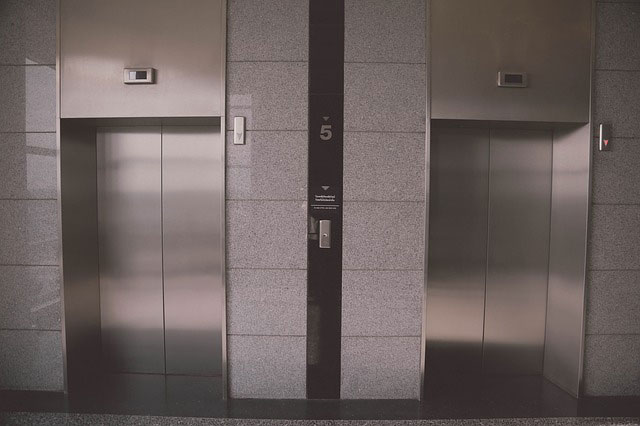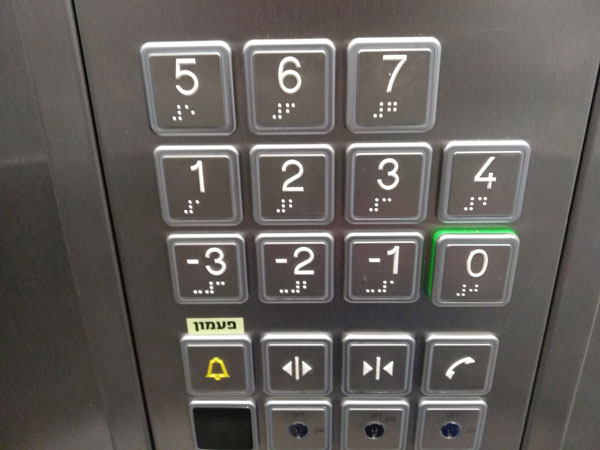I apologize for the delay in posting for my thread of the beauty of Jerusalem. This post is all about the beauty one can find in an elevator. Strange topic? Perhaps! Stay with me for a little and I will show you what beauty one can find even in an elevator.

Now I am not talking here about elevators that are constructed with glass to enable those inside to look out. I am talking about another concept entirely. That is respect and concern shown to those people who will potentially need to use the elevator.
Accessibility of Elevators
In Israel, one finds all kinds of elevators. Many of them are tiny! I mean really, really tiny. Enough for two people to stand squashed, side by side wondering how anyone can design or build an elevator so small. Then one can get those that fit 3 slender people in but not much option for shopping cart or baby stroller. Well yes, if the baby stroller is super narrow, perhaps a stroller for a singleton. But what about other users? What about a woman who has twins or triplets? How does she get to the second or third floor or higher, with her stroller. What about someone in a wheelchair, with a walker, or perhaps in a motorized wheelchair? Have you stopped to look at motorized wheelchairs. Many of them are a lot larger than a regular wheelchair. They have an additional section in the front and perhaps more at the back for the battery pack.
Moving along to another type of issue and I have to ask, what about someone who is tall, chubby or even obese? Obviously I mean really tall and yes, there are tall people around. How do they get into any of these elevators. Keep in mind that someone who is obese often will find going up several flights of stairs to be a challenge. We are not talking about their need for exercise here, we are talking practicality and the right to be able to visit a friend, neighbour or even to get into their own apartment.
What have we learned so far? The size of the elevator matters. I don’t mean it has to be huge, but large enough to be accessible to those with any kind of special need. That could be someone in a wheelchair, someone with a stroller, someone with a shopping trolley or someone with a walking frame. Each of these people require a little more space.
If you look at the elevators in the top photograph, you will notice they have a rectangular box above the elevator door. These rectangles are not just for pretty lights. They indicate what floor the elevator is on at any given time. This is important both to know whether the elevator is far away i.e on the top floor of a building with over 20 floors and you are on the 2nd floor. Well I’d like to know that as I can then decide to walk down two flights of stairs instead of waiting for the elevator. Wouldn’t you like to know whether to wait or take the stairs? It can help you to see if the elevator is stuck on a given floor. Again, can you take the stairs, is it worth waiting? This information is actually useful. Now comes another fact, having the box above the door that shows what floor an elevator is on, can also assist anyone who is stuck, it is therefore a safety feature too.
Accessibility from Within the Elevator
Now I come to another idea, which is the reason I got to do this post in the first place. Take a look at the next photograph. What do you see?

This photograph shows the buttons inside the elevator. To me this is quite amazing and very beautiful to see. I honestly do not know why we do not find this in every elevator in Israel. After all if our websites should be accessible, shouldn’t our elevators also be accessible?
In some of the newer elevators, I have noticed a touch pad that one has to touch where the number is. The number of the floor you require will light up. This might seem fancy, but you have eliminated anyone without adequate co-ordination to touch the correct number and anyone who is visually impaired. The panel above us shows raised numbers as well as Braille. This means that anyone with a visual deficit can operate this elevator independently. The buttons for the numbers of each floor are also large enough that if someone lacks good co-ordination, they are less likely to touch a number next to it by mistake.
Quite beautiful, don’t you think?
Have you ever thought about accessibility? To what extent are you prepared to use your work to help make the life of others easier? If you are an architect, builder, constructor, engineer or elevator engineer, do you think of the needs of others when you go about your daily job? Let us know in the comments below what you have learned about accessibility of elevators and how this is very beautiful.